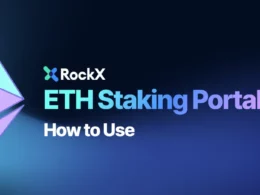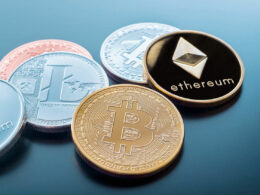Web3 is a vision for a new, better, and fair Internet. This new iteration of the world wide web aims to transform the payment industry with its decentralised, permissionless, and traceless foundation. How does this translate to Web3 payment infrastructure?
Currently a work-in-progress, Web3 employs a technology stack based on decentralised blockchains to enable new paradigms and economy by allowing for peer-to-peer communications without requiring centralised platforms or intermediaries.
This new technology has the potential to revolutionise agreements and value exchange by introducing a universal state layer and incentivising network actors with a token. Web3 payments are basically borderless and support multiple tokens and blockchains.
Blockchain technologies are increasingly enabling seamless transactions and facilitating frictionless global trade. In the process, they are gradually making costly and slow conventional fiat payment systems obsolete.
Given the benefits of Web3, even payment processing giants like Mastercard and Visa have started actively exploring Web3 opportunities. We’re basically on the brink of the Web3 payment revolution.
What is Web3 Payment Infrastructure?

Today’s payment environment is more complex than ever, with high processing fees, lengthy settlement times, and an increasingly digitised world. Web3 offers fast translation speeds, high security, censorship-resistant, and adequate rewards as an alternative to the broken fiat payment system.
The technology stack of Web3 is made up of several layers, which are crucial to designing the ecosystem. But since Web3 is still in its nascent stage, different entities are being defined differently.
Layer 1 forms the base of the overall ecosystem, which is the blockchain platform and is responsible for a use case’s performance, features, and scalability. The second layer protocol defines the interface between blockchain nodes and applications and on-chain and off-chain storage to implement solutions in a simplified manner. On top of this comes the framework, which covers programming languages and libraries used to develop applications. At the topmost layer, we have the user interface and decentralised applications (dApps) for end users to access the endless world of Web3.
Now, the way the Web3 payments work is that it offers a truly decentralised and permissionless protocol, making dApps built on it resistant to financial censorship. Anyone around the world can use these products and services, and they need an internet connection.
This new Web is also bringing the ethos of the early Internet back by being open source, meaning anyone can use and contribute to the codebase. Here, everyone has the freedom to innovate, program, and connect without asking permission, as no single centralised entity controls the entire network.
Moreover, Web3 payment infrastructure is trustless, where participants can interact publicly or privately without a trusted third party. There are no middlemen but rather self-executable smart contracts, which are programs that run when predetermined conditions are met.
Interoperability is another key principle that Web infrastructure is built on, which allows for ease of mobility and connectivity between different applications and platforms. It is also one of the major stepping stones to accelerating the adoption of Web3.
Web3 Payments VS Web2 Payments

Web2 describes the current state of the internet: websites and applications that use user-generated content for end-users. It is characterised by greater user interactivity and collaboration, enhanced communication channels, and more network connectivity penetration.
The rise of Web2 revolves around three core layers of innovation, viz. mobile, social, and cloud. In this phase of the Internet, we gained access to tons and varieties of information with just a click. Not only is Web2 easy to handle, but it is also easy to search for data and information here.
The exponential growth of Web2 was primarily driven by mobile internet access and social networks. However, the phenomenal revenue growth of dominant platforms has made Web2 a centralised controlled internet by those who provide services in exchange for personal data. There is also a lack of privacy, censorship, and risk of spamming, fraud, and virus attacks.
While Web2 provides P2P interactions globally, it involves an intermediary which acts as a trusted intermediary between two people who do not trust or even know each other. Additionally, the intermediaries dictate all the rules of the transactions.
This centralised version of web browsing that is being utilised today was an improvement on the basic Internet structure, which was called Web 1.0. Now, Web3 is building on Web2 and bringing a better & improved version of the internet to the world. Built on edge computing, decentralised data networks, machine learning, and artificial intelligence, Web3 is a vast improvement on Web2.
In the decentralised Web3, there is no one with the power to censor one’s transaction, and blockchain technology provides anonymity. Web3 is further powered by high-processing computers around the world, and even if one node fails, another one picks up the slack as such removing single points of failure.
This new peer-to-peer payment infrastructure is much cheaper and faster, where anyone can easily deploy an app to production with little to no cost and bureaucracy.
Some popular examples of Web3 payments include Bitcoin, Ethereum, Lightning Network, and DAI. Even popular Web2 companies like PayPal are experimenting with and supporting Web3 innovation.
The Easiest Way to Onboard New Users to Web3

By allowing money to be exchanged without the need for a centralised intermediary, in line with the ideas of democratisation and privacy, Web3 payments are gaining adoption at a rapid pace.
However, despite Web2 companies embracing Web3, this adoption is still in its infancy. To bring in the mainstream masses and make a decentralised economy a reality, Web3 needs to create enabling tools, have better UX, and complementary infrastructure compatible with Web2 and Web3.
Web3 is known for its steep learning curve as such easy-to-use products and services can help with the seamless onboarding of users in this new era. Providing users with more possibilities to pay in crypto with ease will further make access to the financial system more widely available and universal.
Terrible user experiences and a bad onboarding process are two of the biggest problems plaguing Web3 adoption.
Currently, exchanges, where you buy and sell crypto, and wallets to connect to dApps are the most basic ways to onboard to Web3. This, however, doesn’t translate to ease of use or comfort for users to try Web3 dApps. Users are further required to manage their own keys, which, while giving the users complete control, may discourage them from using a certain dApp.
Besides simpler on-ramp (fiat to crypto) and off-ramp (crypto to fiat) services, better security, credential management, and custody solutions are needed to drive Web3 adoption forward. The Web3 builders can also leverage games and Web2 finance apps, which are already used by millions of people to educate them about crypto, NFTs, DeFi, DAO, and the metaverse.
The Future of Payment Infrastructure

Web3 will be impacting the majority of industries. However, it mainly aims to revolutionise the payments and finance sector.
The present cross-border payments system is facing challenges such as intermediary interference, long transaction routes, and lengthy processes for financial crimes, all of which lead to delayed payments.
Here decentralised finance or DeFi’s feature of programmability, transparency, immutability, interoperability, and non-custodial can offer an infrastructure to build the future of finance. Eliminating centralised authority in DeFi meanwhile provides more control and options to end users.
Financial systems are not interoperable, which means sending money across the world typically results in unpleasant experiences, delayed settlements, higher fees than usual, and other complexities.
Web3 technology, on the other hand, enables cross-border payments by connecting global banks and making the system interoperable, efficient, and affordable. Moreover, smart contract support introduces more interoperability opportunities by removing human involvement from the equation and allowing the automatic verification of complex functions and compliance requirements.
By incorporating Web3 technology, banks can clear and settle cross-border payments simultaneously in real time. Besides faster payment processing and lower clearing costs, it will increase efficiency and facilitate a robust network.
Open banking is already leading to innovative financial solutions around the world. The distributed ledger technology can further help in micropayments, which failed to take off in traditional payments infrastructure due to the high cost of the transactions and poor integration of the web.
By integrating the internet and digital payments infrastructure, Web3 can achieve a seamless user experience. This robust financial ecosystem created by Web3 can also be integral to the success of the metaverse, which is an immersive 3D virtual experience.
Final Word

Web3 isn’t without limitations, though. Scalability is a big issue due to the decentralised nature of Web3. In terms of payment, this means a transaction needs to be propagated throughout the network, which further makes it slower and costly.
As discussed above, interacting with Web3 applications involves education and extra steps that act as a hurdle to adoption. The lack of these dApps’ integration in modern web browsers makes them less accessible to most users.
The limitation in API connectivity between Web3 and Web2 is also a significant challenge, but recent innovations will help to implement easy API connectivity between the two worlds.
But Web3 is still in its initial stages of development that needs to transform to be ready for full-fledged implementation and widespread adoption. The fact is, despite all the issues, Web3 is a promise of a better internet where anyone can participate and build this future.









